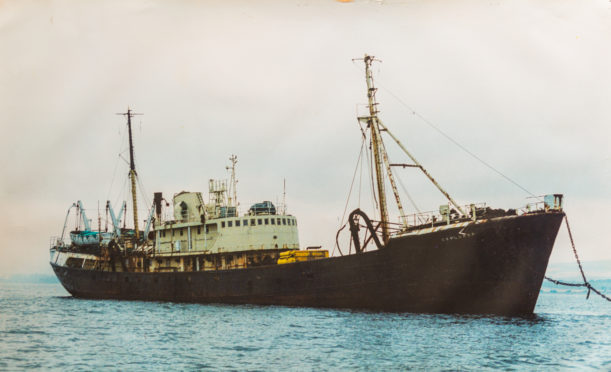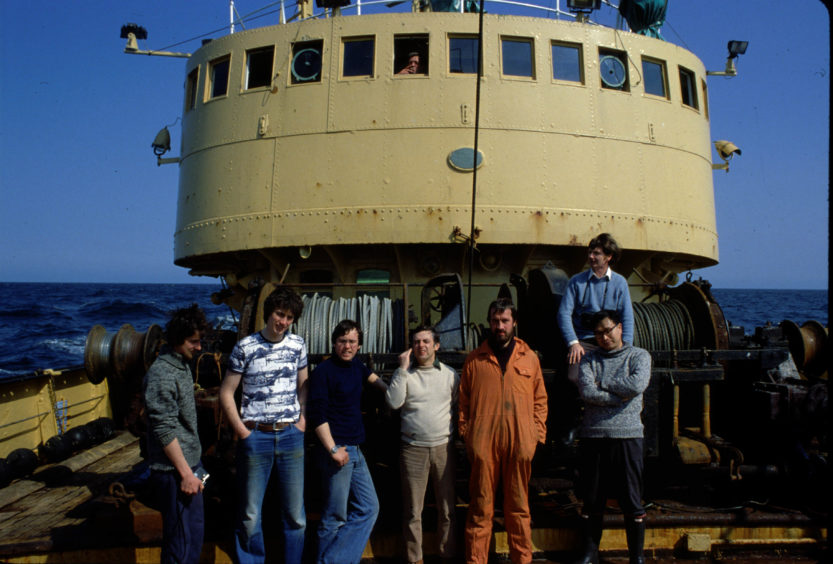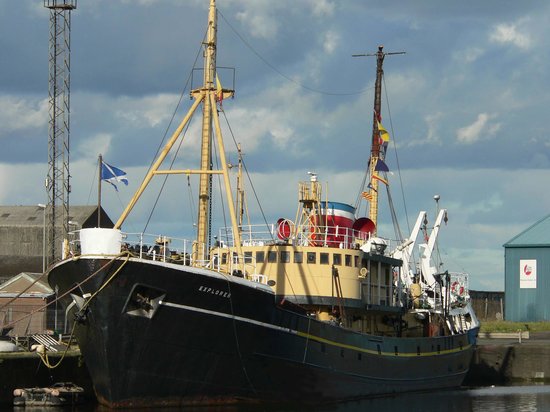John Dunn recalls the time when he used to work as a marine scientist on the SS Explorer, travelling from Aberdeen into the frozen wilderness of the Arctic Circle.
On one occasion, he journeyed from Aberdeen to the White Sea in Russia – a round trip which took him and his colleagues no less than eight weeks.
Even now, at 71, the man who spent 49 years making fresh marine discoveries believes the Explorer – the last surviving steam trawler – which was built in Aberdeen by Alexander Hall’s is a “unique time capsule” from the past.
When it was launched in 1955, the ship had one of only four computers in the Granite City on board – “a massive machine which filled a whole cabin and became incredibly hot” – and it pioneered underwater television in the industry.
His affection for the vessel explains why he has backed the news that a new play and book have been created about the history of the Explorer, which highlight both the rugged nature of life on board and the redoubtable character of the crew.
Mr Dunn said: “She is one of a kind, a throwback to another age, and a ship which was built up to a standard, not down to a cost.
“The importance of the work carried out on the Explorer cannot be overstated. It investigated fish breeding, feeding grounds, stock assessment and the Marine Laboratory in Aberdeen learned so much from all these voyages.
“The extra strengthening of the hull also prepared her for service in the Arctic waters off Greenland and Iceland, and the Barent and White Seas, north of Russia.
“I’ve always been fascinated by the sea and marine life and some of my family thought I had more of a hobby than a job. But I am still working on different projects as a Stem (science, technology, engineering and mathematics) and polar ambassador, and sharing my passion with schools from Buckie and Elgin to Aberdeen.”
Jim Brown’s play Sea Changes is being staged in Leith, where the vessel is currently docked.
Meanwhile Liz Hare has compiled a book featuring the memories of as many of the surviving seafarers as she could find.
Mr Dunn, who was made an MBE for marine science and education, revealed some of the more unusual ways the SS Explorer recruited new crew members.
He said: “The government never paid the men very well, so we had difficulty hiring people in the 1960s who wanted to go on a steam trawler. But we would occasionally find people from Craiginches Prison in Aberdeen who were reaching the end of their sentence and this was a good way of them getting some NI stamps, rather than employers wondering why they had been on a long holiday.
“Sometimes they arrived on board with just a case to their name. Nothing else. But they took pride in their work and that’s what comes across in the new play.
“Jim has done his research and I’m glad we are starting to spread the word about the Explorer, because she deserves better than to be sold off for scrap.”
>> Keep up to date with the latest news with The P&J newsletter
The Explorer has been placed on the National Historic Ships Register and the SS Explorer Preservation Society is currently restoring her in Leith. But Mr Dunn is among those who believe the vessel should be brought back to Aberdeen.
He said: “The Maritime Museum was interested, but there just wasn’t the money and the ship ended up in the Cromarty Firth in the 1990s, where it was vandalised, it regularly had parts stolen, and was at risk from the weather and a lack of care.
“She deserves better and is the last of a kind from Aberdeen. I can’t be the only person who thinks it would be fitting if she returned to the city where she was created.”


